From the impressive royal landmarks to the lively pulse of its market and streets, Phnom Penh is a city that not only showcases Cambodia’s past but also its dynamic present.
The capital city of Cambodia is rich in history and offers a range of experiences. Whether you’re drawn to exploring the architectural splendors or immersing yourself in the local lifestyle and nightlife, Phnom Penh got you covered! Here are the BEST things to do in Phnom Penh:
1. The Royal Palace and Silver Pagoda
The Royal Palace in Phnom Penh was built in the 1860s during King Norodom’s reign and has since served as the royal residence for the heads of state. Its location near the banks of the mighty Mekong River was strategically chosen for spiritual and geographical significance.
The palace’s architecture is a stunning example of classic Khmer design, blended with a touch of French influence. The complex comprises several buildings, each unique in function and style, including the Throne Hall, used for coronations and ceremonial occasions.


Adjacent to the Royal Palace, the Silver Pagoda stands with its unique floor made from over 5,000 silver tiles!
Fun Fact: The Silver Pagoda is home to a small but famous emerald Buddha. It’s said that this statue brings prosperity and peace to the land, symbolizing the spiritual heart of Cambodia.
🎟️ Entry fee is $10 USD per person, cash only.
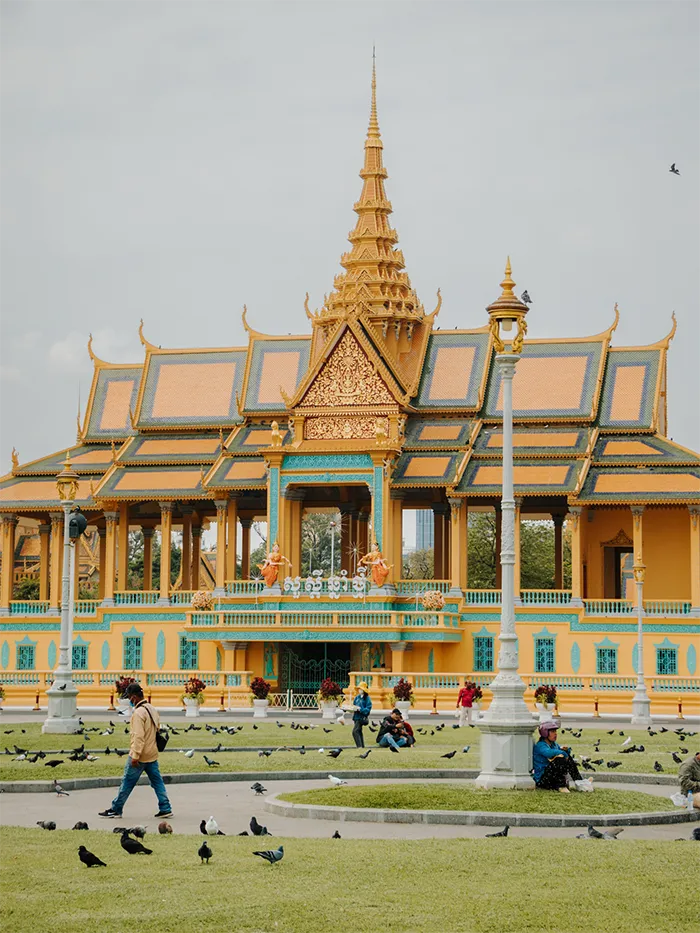
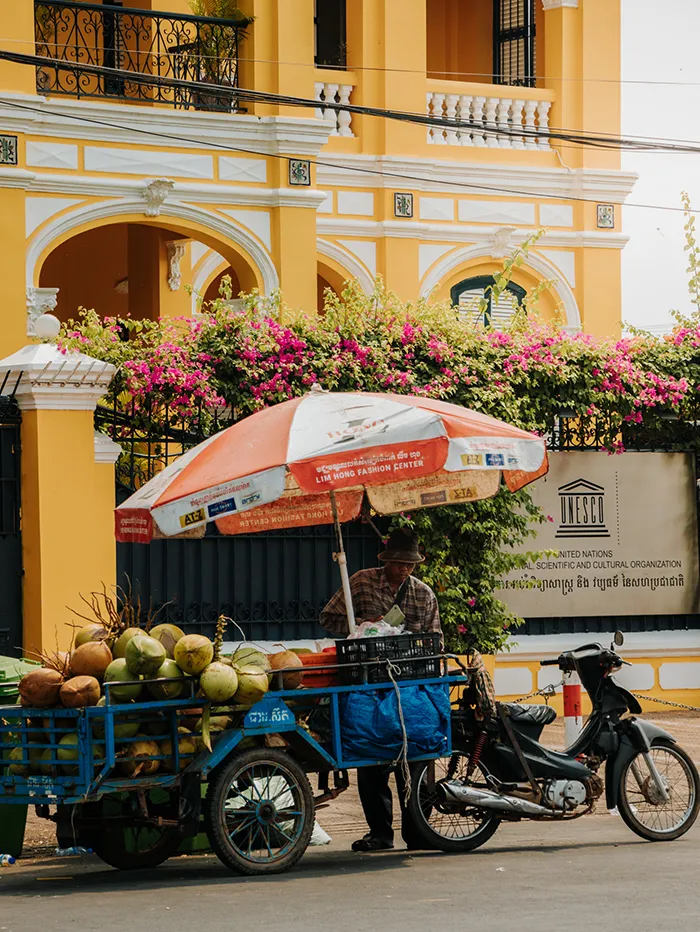
Also read: Temple Etiquette: A Guide to Visiting Temples in Southeast Asia
Pro tip: if you prefer to have more flexibility during your time in Cambodia, we recommend the most authentic way of travel in the country: renting and driving your very own Tuk-Tuk with TukTuk Rental 🛺
2. National Museum of Cambodia
Just next to the Royal Palace, the National Museum of Cambodia was established in 1920. The museum’s collection spans from the prehistoric era to the post-Angkorian period and is home to over 14,000 items, including sculptures, ceramics, bronzes, and ethnographic objects. The museum is organized chronologically, allowing visitors to walk through different eras of Cambodian history.
🎟️ Entry fee is $10 USD per adult and $5 per kid.
Also read: Top 12 Things to Do in Siem Reap – Beyond Angkor Wat
3. Visit Wat Phnom
As folklore has it, a wealthy widow named Daun Penh discovered several Buddha statues inside a floating tree on the Mekong River back in the 14th century. She then erected a small pagoda on top of a hill (Phnom means Hill in Khmer) to house these sacred relics, giving birth to both the temple and the city’s name – Phnom Penh.
Fun Fact: the spirit of Daun Penh is said to still watch over the temple and the city. Many locals believe in her protective powers and come to Wat Phnom to seek blessings and make wishes for good fortune.
The hill’s base is surrounded by a peaceful park where you can spot beautiful native birds playing around in the grass.
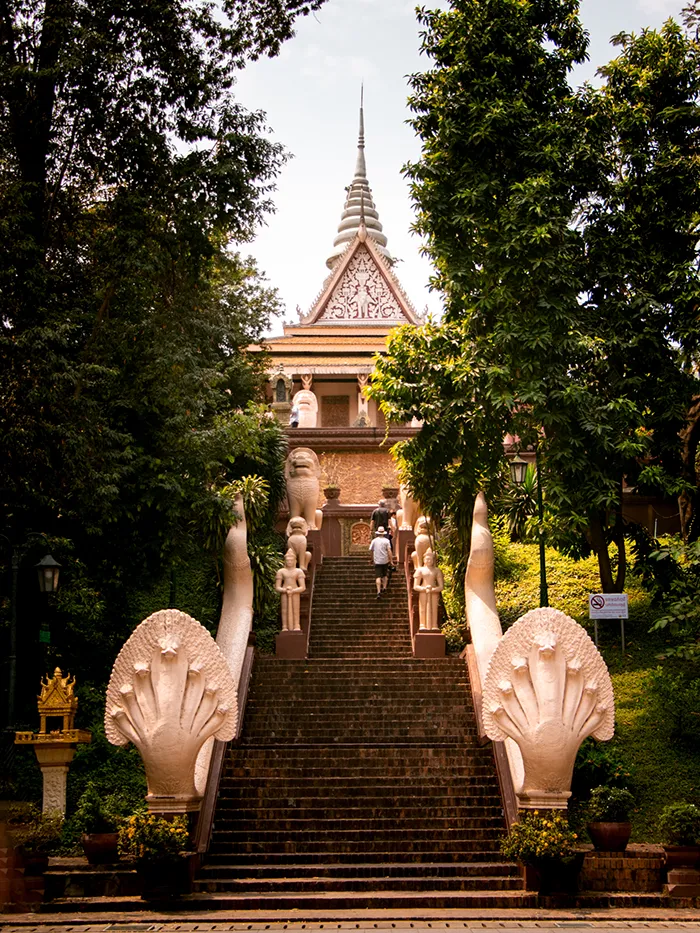
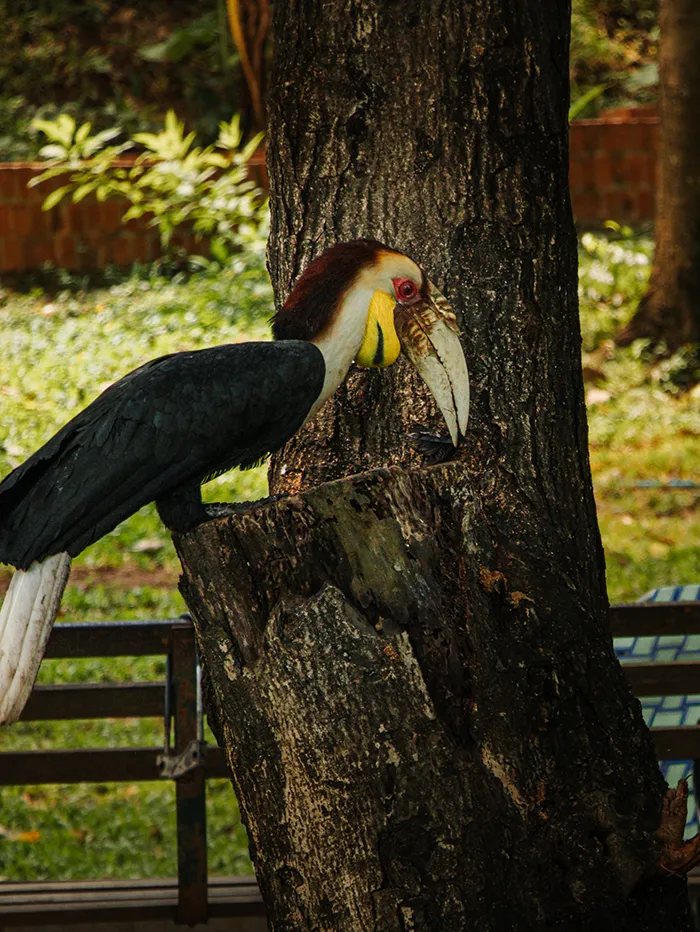
Fun Fact: A Bodhi tree on the temple’s western side is believed to be a direct descendant of the tree under which Buddha attained enlightenment.
🎟️ Entry fee is $1 USD per person, cash only.
4. Visit the Independence Monument
In the heart of Phnom Penh stands the Independence Monument, a testament to Cambodia’s journey to freedom.
Inaugurated in 1958 to celebrate the country’s liberation from French colonial rule in 1953, the monument’s style is a fusion of traditional Khmer and modern architectural elements with elements similar to those found in the ancient capital of Angor.
Also read: Angkor Wat – The Ultimate Guide for First-Time Visitors
5. Enjoy the Riverside at Sisowath Quay
Sisowath Quay is a waterfront promenade that lines the western bank of the Tonle Sap River in Phnom Penh. Named after King Sisowath, who reigned during the early 20th century, Sisowath Quay is a remnant of the French colonial era.
The long, meandering promenade is lined with palm trees and offers beautiful river views. Lots of restaurants, boutique shops, and bars are located around this area. It also includes a beautifully landscaped park, where you can find locals practicing Tai Chi in the mornings or enjoying picnics during weekends.
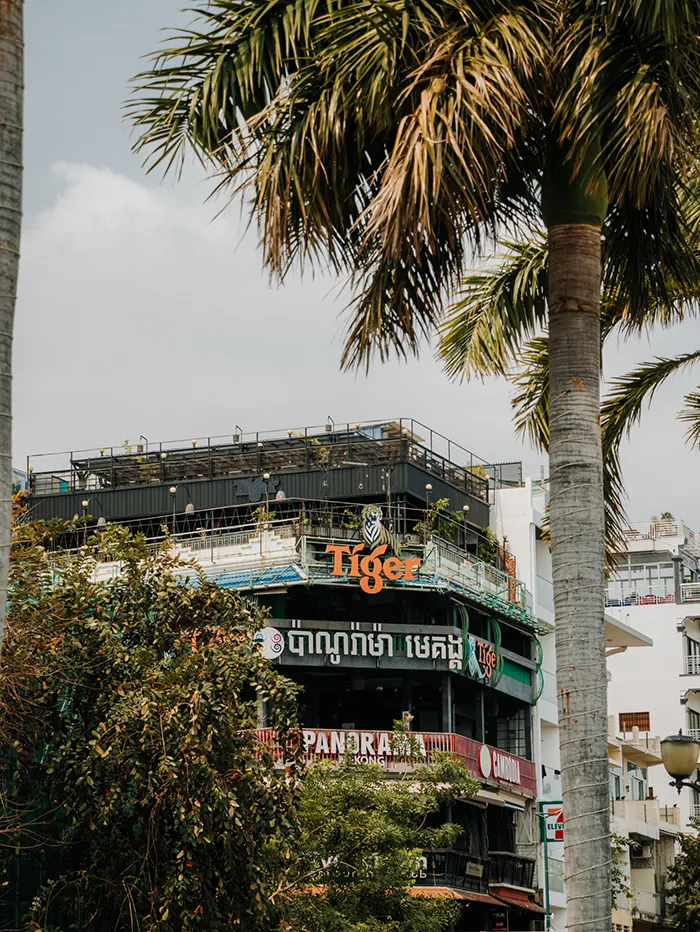
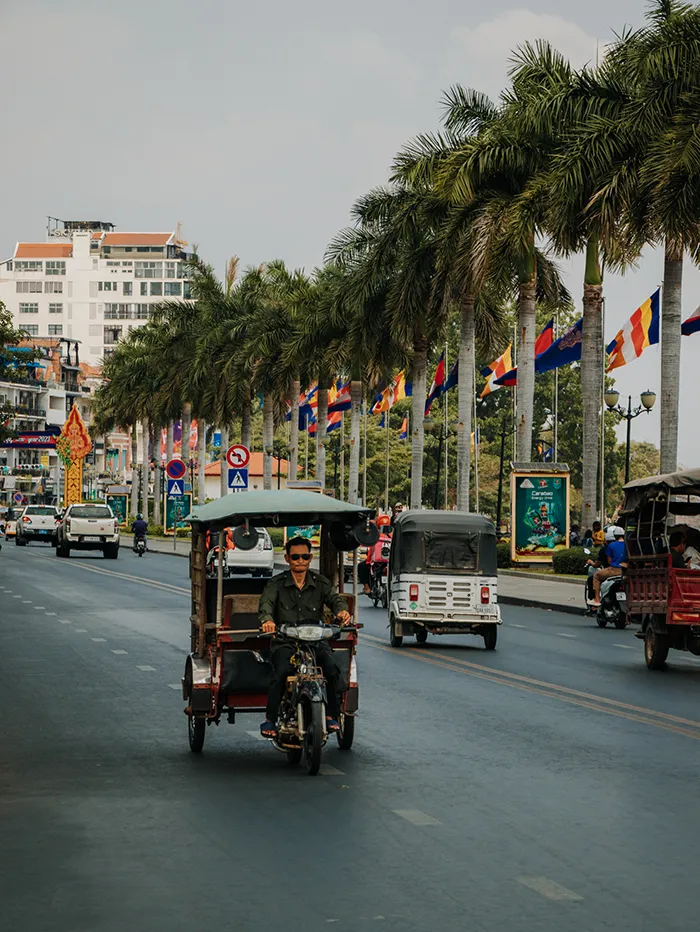
Hot tip: avoid visiting during mid-day as there isn’t much shade around here.
6. Visit Wat Ounalom
Along the bustling Sisowath Quay, Wat Ounalom stands as a serene sanctuary and a symbol of Buddhist spirituality in Cambodia. Dating back to 1443, it is one of the oldest Buddhist temples in the capital, established just a few decades after the city itself came into existence. Nowadays, the temple serves as the headquarters of Cambodian Buddhism.
Fun fact: The name ‘Ounalom’ refers to the temple’s most sacred relic – an ‘Ounalom’ (eyebrow hair) of Buddha. Just like the Tooth Temple in Kandy, Sri Lanka, where a tooth of Buddha is believed to be secured.
Wat Ounalom also houses an extensive library of Buddhist texts. The walls of the temple are adorned with vibrant murals depicting scenes from the Jataka tales (stories of Buddha’s previous lives) and the history of Buddhism in Cambodia.
7. Shop at Phsar Thmei (Central Market)
Sitting under one of the largest domes on the continent in the Central Market of Phnom Penh. The place is packed with all kinds of goods, from gold and silverware to antique coins, clothing, electronic goods, and souvenirs. It might not be the cheapest place in town since they add a couple of bucks for tourists, but it’s a great shopping experience nonetheless.
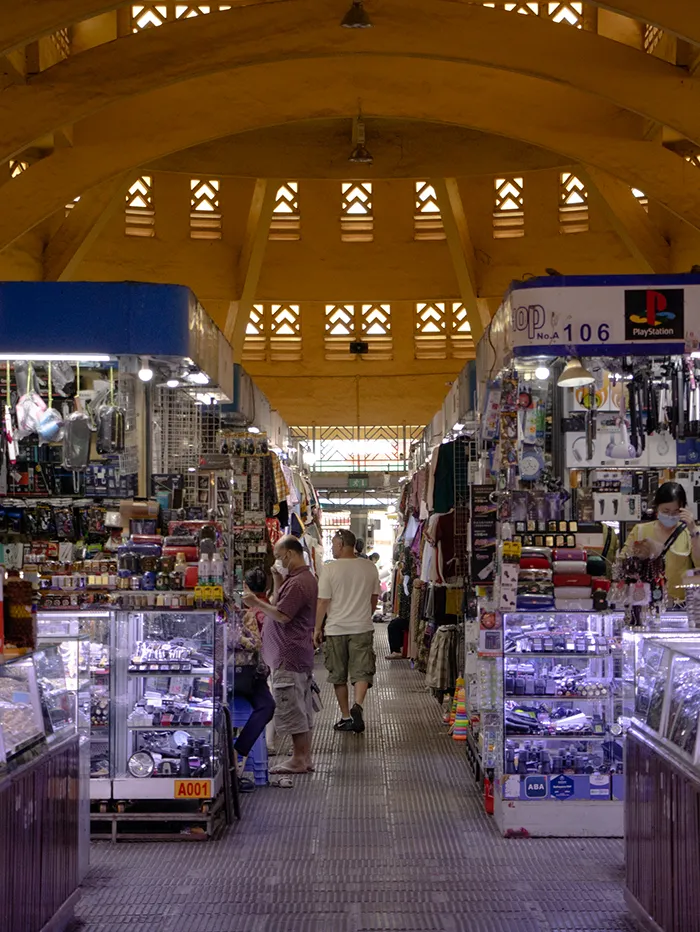
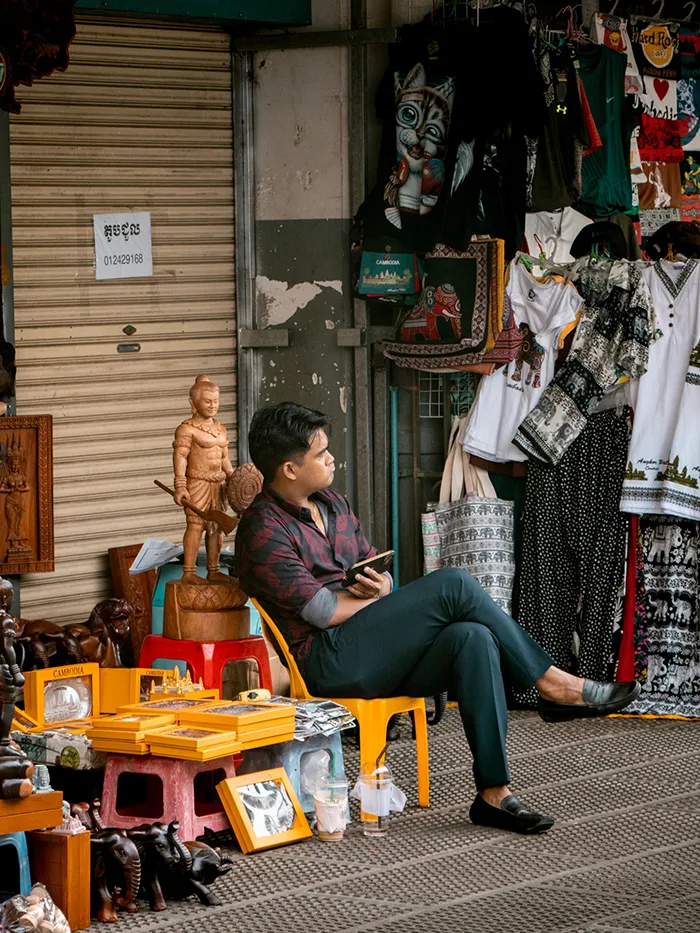
Note: The market is open daily from 6:30 AM to 5:30 PM, with mornings being the best time to visit for fewer crowds.
8. S21 Prison & The Killing Fields
Between the years 1975 and 1979, Cambodia was ruled by the brutal Khmer Rouge. The leader Pol Pot forced the population to work in fields and ordered the mass murder of anyone who didn’t agree with his agenda: to make Cambodia an agrarian society of small-scale farmers.
Pol Pot was afraid of modern society and all educated professionals such as doctors and teachers, as well as people who could speak a foreign language, were considered dangerous to his regime.
It is estimated that over 1.7 million people were tortured, killed, and thrown into mass graves during the Khmer Rouge.
Choeung Ek Genocidal Center
Killing fields existed all around the country during this time, but Choeung Ek in Phnom Penh is the most well-known and visited. Only prisoners who were about to be executed were taken to the fields, including children, and they were beaten to death as the Khmer Rouge found bullets “too expensive”.
To pay respect to all of the victims, a memorial Stupa was built at the heart of Choeung Ek, containing thousands of skulls.
🎟️ The entry fee is $8 USD for adults, with an audio guide. The Genocidal Center is located around 16 km from the city center and easily accessible by tuk-tuk.
S21 Prison
The S21 Prison used to be a school before the Khmer Rouge turned it into a prison. It is estimated that around 20,000 innocent people were tortured here to the point of admitting to crimes they did not commit. S21 Prison is now a museum, serving to educate the public and honor the memory of the victims.
🎟️ The entry fee is $5 USD without an audio guide, and 8$ USD with an audio guide.
9. Visit the Old Market
If you take a traditional cooking class here, chances are stopping at the Old Market to get fresh produce for the class is part of the activity! From fruits and vegetables to electronics, this is where locals shop and it’s one of the most authentic markets in Phnom Penh.
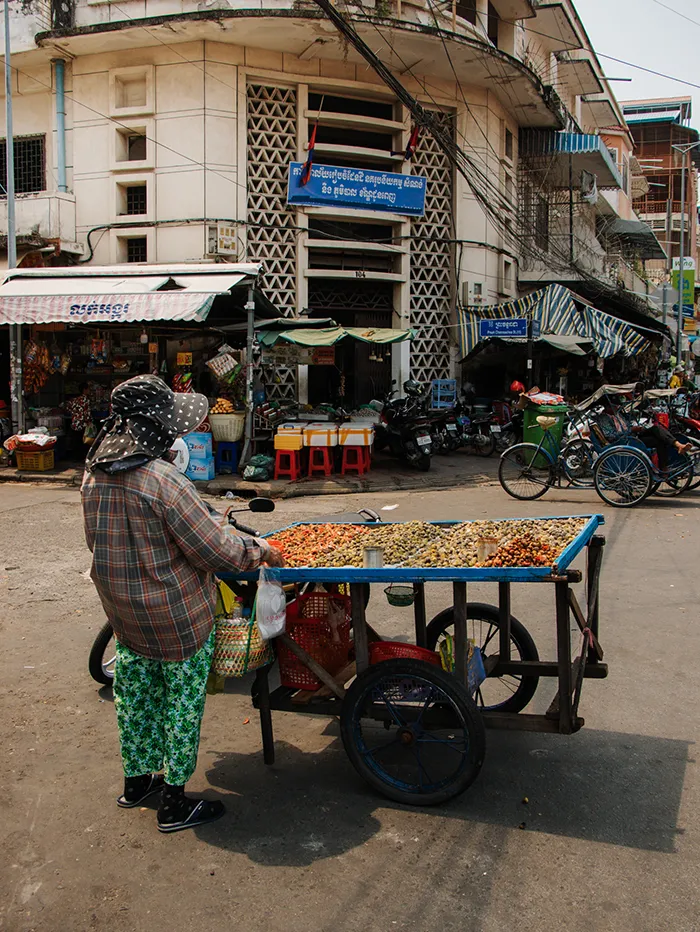
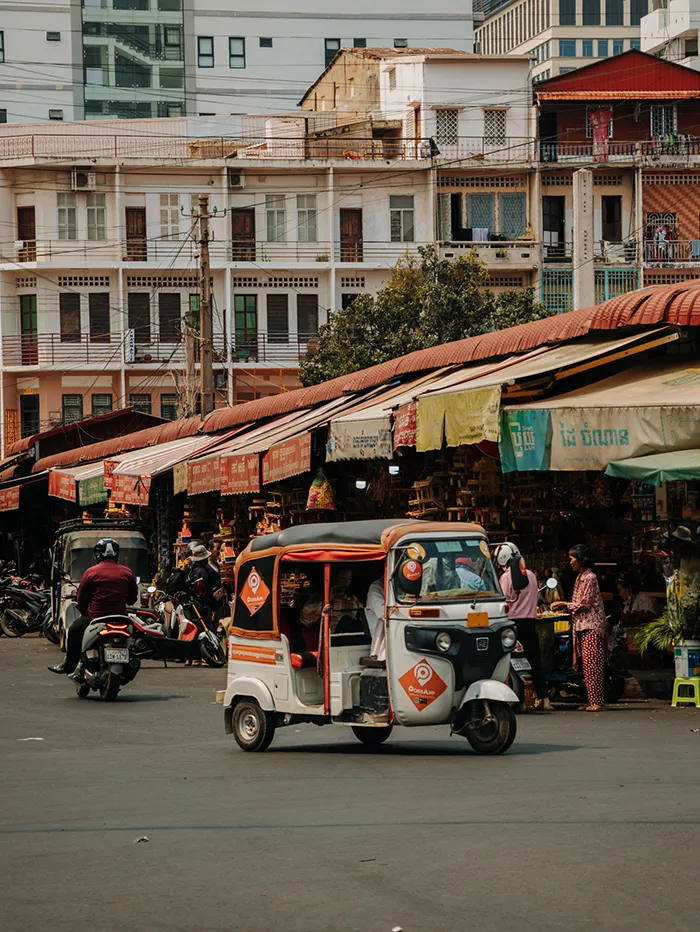
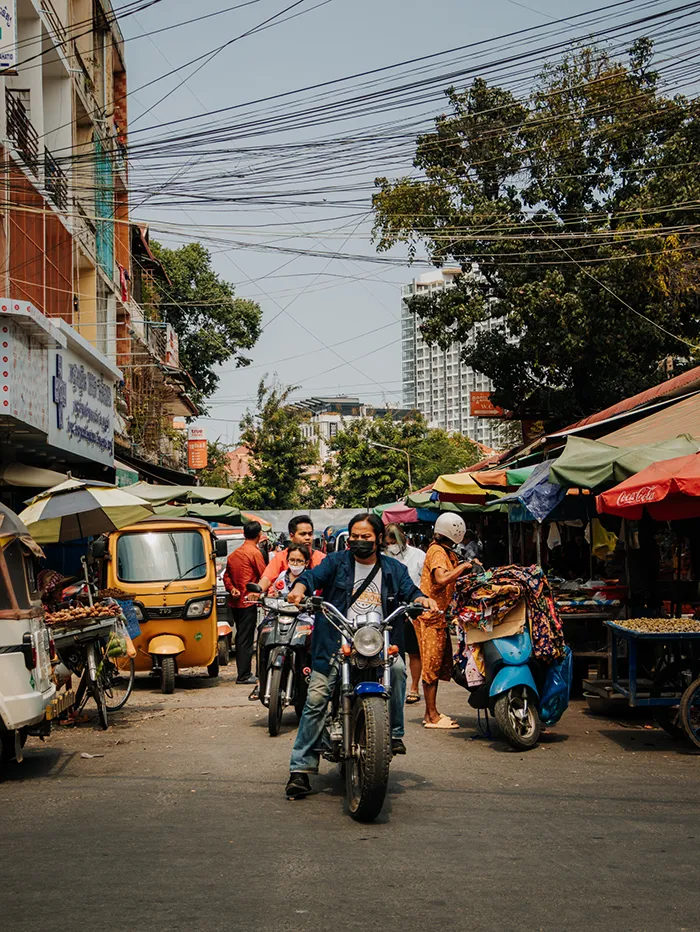

Also read: What to Do in Kampot – Cambodia’s Latest Hotspot
Besides joining a cooking class, you can also join a food tour! Most of them include a quick visit to the morning markets like the ones below:
10. Take a Mekong River Cruise
The Mekong, one of Asia’s great rivers, runs through a total of six countries and covers a distance of nearly 5,000 km. After making its way through the border between Laos and Thailand, and flowing across Cambodia, it runs right next to Phnom Penh before making its way to Vietnam where it meets the sea.
A popular way to experience this mighty river is by hopping on a cruise. Sunset cruises are particularly popular, providing a magical backdrop as the sky transforms with vibrant colors.
Dinner cruises, on the other hand, offer a delightful combination of scenic views and local cuisine. Some cruises include stops at riverside villages or temples, offering a glimpse into the local way of life.
The ideal time for a Mekong cruise is during the cooler months from November to February. However, sunset cruises are a great option year-round.
Cruises can be booked directly at the riverfront or in advance online. We recommend using Get Your Guide to book cool activities while traveling, like the ones below:
11. Experience Phnom Penh’s Nightlife
The capital city of Cambodia truly comes alive as the sun sets! From buzzing street corners to chic rooftop bars. Here are some of the best spots:
Eclipse Sky Bar: Offering panoramic views of the city, Eclipse Sky Bar is one of the highest rooftop bars in Phnom Penh. It’s the perfect place for a classy evening out, complete with sophisticated cocktails and a stunning skyline backdrop.
Pontoon Club: For those who love to dance, the Pontoon Club is a must-visit. This iconic nightclub is known for its vibrant dance floor, international DJs, and themed party nights.
Street 308: Often referred to as Bassac Lane, this area is popular with expats and locals alike and it’s an excellent spot for bar-hopping and experiencing Phnom Penh’s creative cocktails and craft beers.
Also read: Koh Rong – The Ultimate Guide to The Maldives of Cambodia









